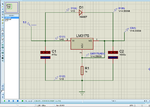SiddharthGajjar
Junior Member level 3
hey
i am planning to use LM317 as power supply for SIM900 to get 4.2 regulated output voltage...
will this work????
regards
i am planning to use LM317 as power supply for SIM900 to get 4.2 regulated output voltage...
will this work????
regards
